- Administrator
- Albums and Singles

"Ian Masters and Warren Defever working together as ESP Summer. More coming soon."
More information can be found here.
Read More
- Administrator
- Albums and Singles

Midwife has released a split cassette with M. Trecka.
Side A. "In Ellipsis Landscapes" Mark Trecka in collaboration Susan Alcorn 17:20
Side B. "Heaven" - Midwife in collaboration with Amulets 16:46
"I recorded it before I wrote anything for Forever; it acts as a kind of prologue to the record in my mind." -Madeline Johnston
More information can be found here.
Read More
- Administrator
- Albums and Singles
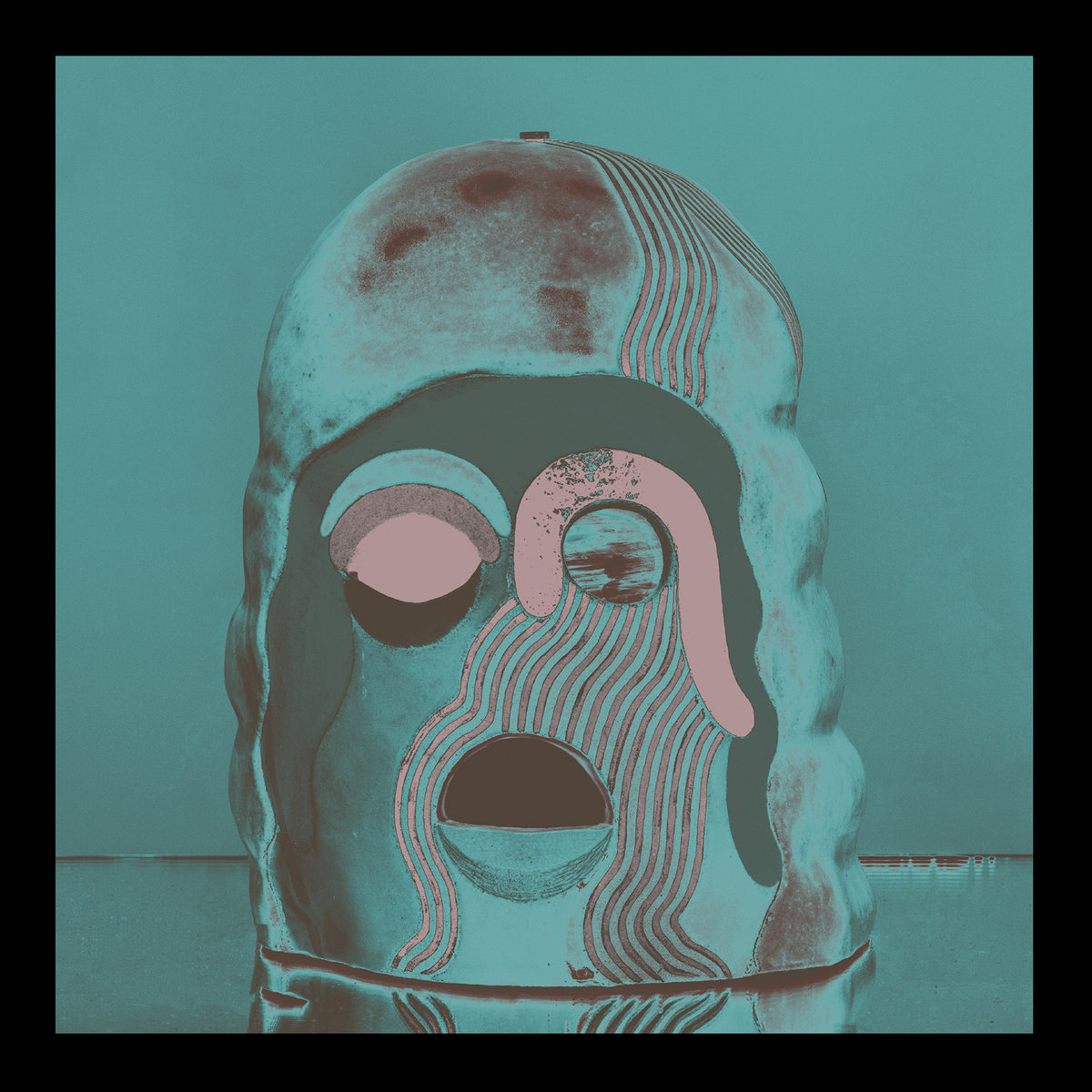 FACS, spawned from the ashes of Chicago’s Disappears, display a certain homage to early Public Image Limited paired with a reverence to Fugazi on their latest album, but visualize a version of both, pressed through a sieve of muted sonics and disaffected resignation. Void Moments finds FACS’ musical sound experimentation greatly expanded beyond their prior output. With a finely crafted blend of bleak minimalism, dark noise, and energizing rhythms, this work takes all the energy of recent experiments, honing the melodies into a deeper, darker, and richer menace of beauty and power.
FACS, spawned from the ashes of Chicago’s Disappears, display a certain homage to early Public Image Limited paired with a reverence to Fugazi on their latest album, but visualize a version of both, pressed through a sieve of muted sonics and disaffected resignation. Void Moments finds FACS’ musical sound experimentation greatly expanded beyond their prior output. With a finely crafted blend of bleak minimalism, dark noise, and energizing rhythms, this work takes all the energy of recent experiments, honing the melodies into a deeper, darker, and richer menace of beauty and power.
The album kicks off with "Boy," deceptively sounding like a simple take on nineties noisy post-rock, until about halfway when the sonic meatiness starts to engage. This merges nicely into "Teenage Hive" at which point the true flavor of the album starts to reveal itself. Noah Leger’s drumming doesn’t attempt to 100% match up with the rest of the instruments, creating an unease coated by a thick layer of discordant guitars, Brian Case’s disenchanted vocals mired in the mix.
There is a sense of "void moments" throughout the record, as if meant to echo a sense of erased time in 2020, and Case vocalizes his disapproval, with the rest of the group displaying their displeasure through a controlled discord. "Lifelike" starts off on an industrial footing with the repeated crunch of distorted guitar, haunted by accents of atmospheric electronics, then launching into a chaotic flurry of Leger’s drums, the void driven home by Alianna Kalaba’s deep bass delay.
Closing track "Dub Over" is probably the most ominous thing I've heard in months, positively crying out for resolution, an escape from claustrophobic spaces. It builds from an atmospheric gothic foundation of muted guitar and distant, ethereal electronics, driven by a cold, staggered drum beat before being overshadowed by modulated vocals and wailing guitars before the guitar is left to sustain into nothingness. FACS often use the space between sounds to invoke emotion, and the space of void is echoed lyrically: "Are you sure truth is space between words / can you be sure it’s what you want?"
Void Moments was engineered by the illustrious Sanford Parker, who has lent his touch to a wide array of artists spanning multiple genres—noise, post-punk, death rock, industrial, doom, metal, dark ambient and others—as well as being an active producer and musician, both solo and in other projects. Sanford is a master at capturing bands at their most visceral and raw, and his work here is no exception. At the closure of "Version," a track sounding much like a deliberate and chaotic replicate of an already zoned and drawn-out Morphine track, one of the band’s members can be heard excitedly inquiring "Sanford, did you record that?" Clearly he did, with all the bands rawness captured for posterity.
Read More
- Administrator
- Albums and Singles
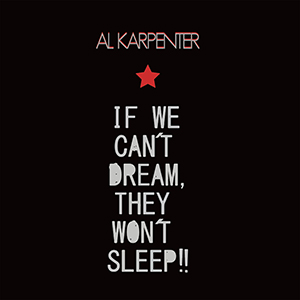 Al Karpenter’s debut album is one of those that feels perfectly aligned with the present day. With performers hailing from the Basque region of Spain, Japan, and Berlin, the entire world’s state of disarray is fully represented in the broken electronics, erratic garage rock, and full on unhinged punk styles. It is entirely unpredictable: a massively disparate backing band supporting Karpenter’s erratic, rambling vocal style that is a ceaseless mix of frustration, paranoia, and anger, but it all makes sense and—while it may not be a casual experience—it is a gripping one.
Al Karpenter’s debut album is one of those that feels perfectly aligned with the present day. With performers hailing from the Basque region of Spain, Japan, and Berlin, the entire world’s state of disarray is fully represented in the broken electronics, erratic garage rock, and full on unhinged punk styles. It is entirely unpredictable: a massively disparate backing band supporting Karpenter’s erratic, rambling vocal style that is a ceaseless mix of frustration, paranoia, and anger, but it all makes sense and—while it may not be a casual experience—it is a gripping one.
Karpenter and crew: a backing band made up of Bilbao, Spain’s preeminent experimenters (Mattin, Joxean Rivas, and María Seco), early Fushitsusha drummer Seijiro Murayama, Lucio Capece, and Chie Mukai waste no time in getting weird.Right from the onset, the opening title song is all massive bass, garage guitars, and erratic drum machine loops.With some shifting tempos and intentionally jarring stop/start moments, there is an endearing, and intentional sloppiness throughout.Later on, the crew transition things to more menacing spaces, with Karpenter's megaphone like vocals and shrill electronics giving a greater heft to the proceedings.
That psychedelic tinged garage punk vibe is probably the most consistent thing on here, and is also prominently featured on "Sing the Battle Hymn!" as well.Fading in with a lofi 60s rock mood, it quickly erupts into full automatic drumming and broken guitar squalls.On "No Face" a similar guitar sound bursts out here and there, but in this case it is more of an added flavoring to dreary improvised percussion and elongated strings by Mukai, making for one of the few meditative moments on this otherwise blasting record.
Other songs on If We Can't Dream, They Won't Sleep! lean a bit more into the electronic end of the spectrum.With Karpenter's voice and Mattin's electronics leading the way, the subterranean bass and skittering cymbals, "Pow'r" resembles an extremely bastardized take on Miami Bass.That is at least until the jazzy sax of Capece and improvised percussion from Rivas and Murayama shift into focus.Even with Karpenter’s spoken word and rigid rhythms, album closer "Riot & Roll!!" is another electronics heavy piece of sputtering rhythms and synths, bass guitar, rigid rhythms, and Karpenter's far off frustrated yelling.
For me, the high water mark of the album is the side one ending "If They Sleep…" The up front drumming and jazz-laden outbursts with Karpenter's bizarre re-interpretation of the Stooges’ 1969, lyrically updated for 2019, capture frustration and disgust perfectly.Samples, surging electronics, and a multitude of rhythms intertwine for something that feels simultaneously spontaneous and composed.For its entire shambolic opening, however, the second half makes for an accurate reading of free fusion jazz with just the right amount of noise and absurdity to be had.
As a debut, Al Karpenter's If We Can’t Dream, They Won’t Sleep!! is certainly a difficult one to categorize.At times sounding completely unhinged and random, and at others something that is actually carefully planned and structured, it is challenging to say the least.But regardless, he and his backing band use this to create such an amazing sense of tension, frustration, and confusion that just makes perfect sense.With some pure strain psychedelic guitar workouts and noise outbursts that add a sense of both terror and fun, the album is sprawling and all over the place, yet given how 2020 has been thus far (and is likely to continue), it is the perfect sound for the times.
Read More
- Administrator
- Albums and Singles
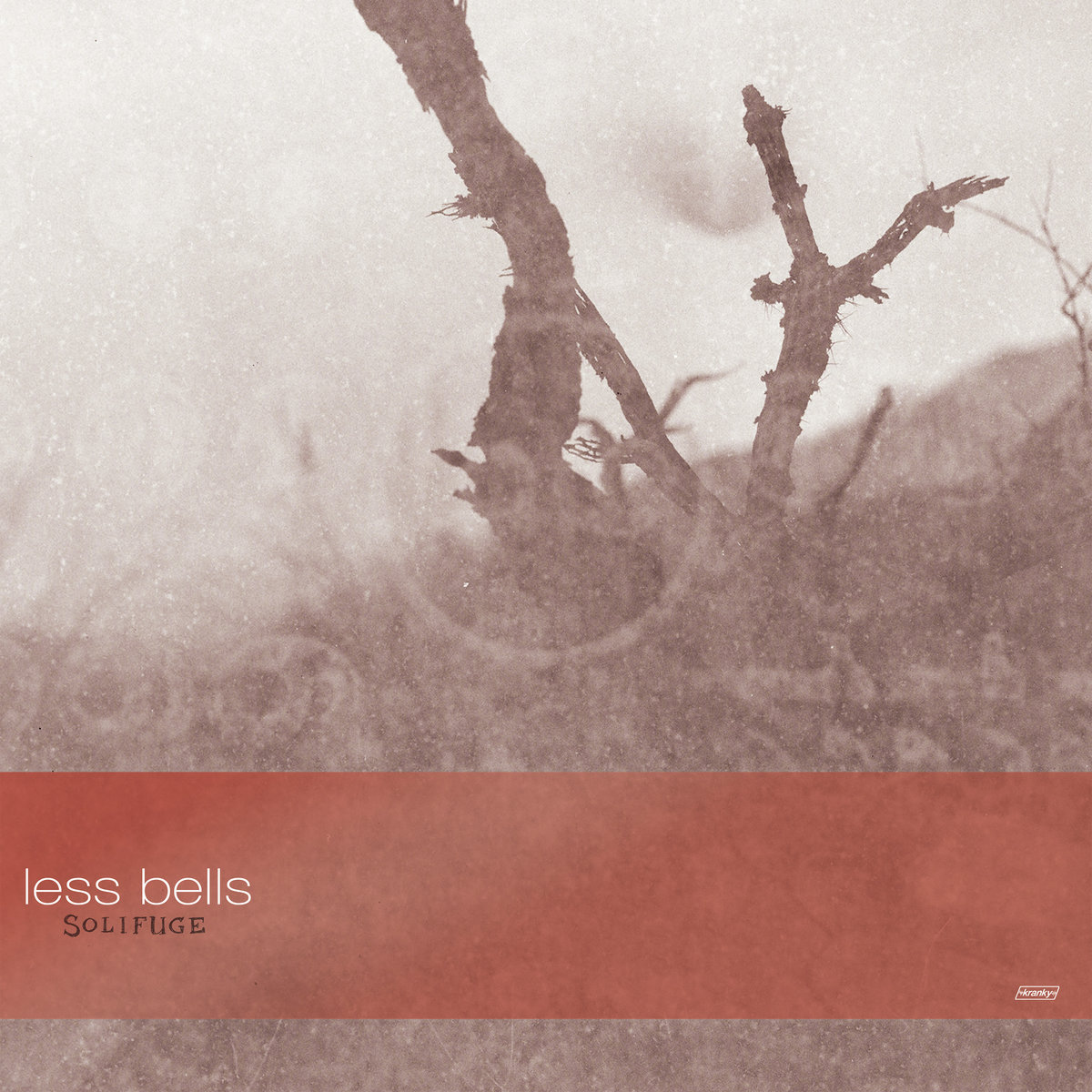
All music has varying levels of emotional intensity, but some music is made just for this purpose. Hence the debut from Less Bells, the ethereal project of violinist/composer Julie Carpenter. Inspired by the desert sparseness of Joshua Tree, Solifuge — a word derived from "Solitude" and "Refuge" — is a lush neoclassical work crafted with a wide array of both electronic and acoustic instruments, resulting in an ambient journey that is unexpectedly not as meditative as the description suggests.
Less can be more, and a weaving of violin, cello, voice and synth (and yes, bells) supply that concept, providing an abundant orchestral soundscape that serves to draw in listeners with subtlety rather than salience. Having scored for a surprising number of TV series and documentaries, Carpenter understands how to best match sound with image to reinforce a story. This background is reinforced on Solifuge, a title that also refers to "sun spiders" or "wind scorpions" of the class Arachnida and found mostly in desert climates. The cover sports a photo representing the dryness of such a climate, and is mirrored by song titles such as "Desert" and "Golden Storm." Either interpretation of the album's title may, or may not, be what the artist intended, but the beauty of any good story is in open interpretation by the reader.
When I have taken long drives through the southwestern United States, I find my journey is two-fold. There are times when I don't pay much attention to the landscape, instead viewing it as a seemingly non-stop barren landscape through which to pass through. At other times, I have paused to truly take in the beauty of the teeming, yet often concealed wildlife, a subdued landscape that belies the assortment of wild, untamed flora and fauna within. Such a two-sided analogy is perfect for the sounds within; a complacent and gentle intimacy of that environment is evident about halfway through the album before it takes a wilder turn. Gentle effects make way for unnerving atonal experimentation. The layers of this work make it incredibly suited for vinyl.
Carpenter has commented that many of the compositions on Solifuge are "inspired by August monsoons rolling in over the mountains, others by clear, starry nights." Her grasp of compositional elements provide a rollercoaster of emotions: a fading cello that leaves a feeling of emptiness ("Desert") contrasted with a mood of joyful wonder ("Golden Storm"). "Milwaukee Protocol" is the longest track on the album, affording it time to build towards a sense of dread and dissonance from serene beginnings, becoming claustrophobic before beckoning a sweet release at the end. The musical journey is controlled with her mastery of composition, like a magician conjuring up an illusionary landscape, leading the traveler to an unknown destination while still allowing space to wander and get lost.
Read More
- Administrator
- Albums and Singles
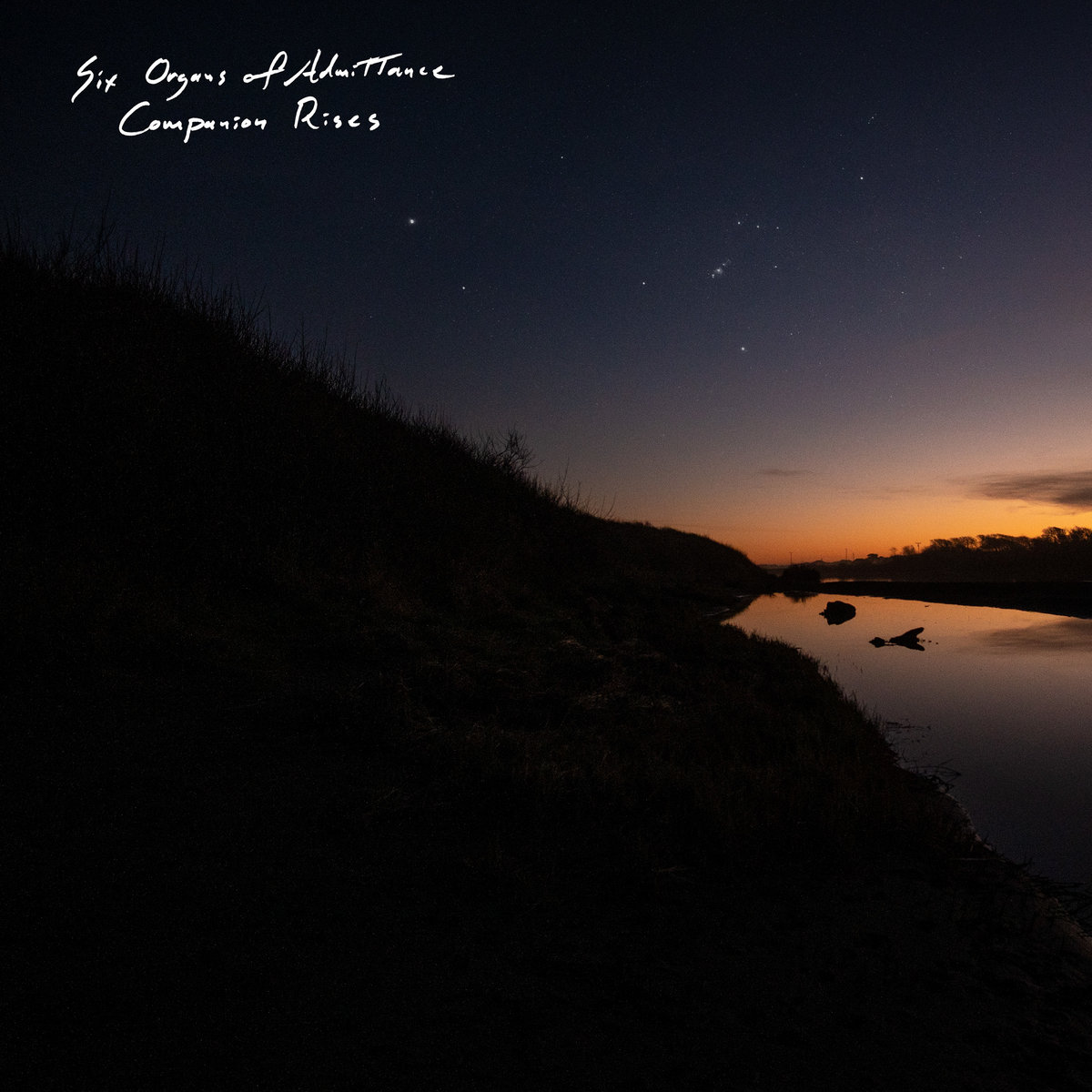
When I first encountered Six Organs of Admittance some time in the early '00s, the bits and pieces I heard were scattered across different college stations, smothered by a popular glut of what I categorize—unfairly or not—"folk hipster wannabes." Consequently, the work Ben Chasny was doing became lost on me, choosing to turn my attention instead to more experimental drone and krautrock, two genres I viewed as mutually exclusive from folk. I had long been into psychedelic rock in the vein of Jefferson Airplane, but it wasn’t until I ventured into English folk like Pentangle and Fairport Convention in the '10s that I was pushed towards the psychedelic folk leanings of Roy Harper, John Fahey, and Sandy Bull. From there, it was easy to fall into a rabbit hole of amazing fingerpick guitarists, but the field of guitarists taking it deep into experimental sonic territory was sparse at best.
Fast forward to 2020, and I am kicking myself for skipping Six Organs all those years. Nonetheless, I am beyond happy to be more intimately introduced starting with this one, which takes all of the great guitar sounds I became obsessed with, and smashes them together into an extraordinary sonic synthesis of acoustics, noise and drone. Chasny’s melodic and organic guitar work, ever present at the forefront, is enriched with added metaphysical imagery, sonic distortion, and synthetic ambience blending the musical palette to create pieces that are as invigorating as they are meditative. While loops and sound processing are abundant, they serve to enhance the emotive power of the songs, even on the occasion the sounds drown the uppermost layer of Chasny’s guitar. As an example, track "Black Tea" begins with rolling acoustic chords, becoming offset by echo and modulation, amping up the gloomy atmosphere as the phrase "I can barely move" is repeated.
Companion Rises retains the "psychedelic folk" moniker by beguiling the earbuds with a commanding acoustic cocktail, but bears plenty of sonic resonance to destroy the definition. "The 101" rocks out, a blur of noise and fuzz with vocals drawn back into the mix, but the electric guitar is never missed as it ends up monopolizing the song with a herculean solo that results in a potent finish. Standout track "Haunted and Known" kicks off with a gentle and passionate acoustic refrain that melts into waves of distortion, changing the gentle refrain into a melody of unease and wonder.
Chasny states the lyrics on Companion Rises relate to the stars. The cover shows a view of the sky at the last moments of sunset. Could the companion that rises be the night to our day, the dark to our light? If so, then the album seems to suggest that this companion is not all bad. The album settles into a gentle closure with the ambient piece "Worn Down to the Light," suggesting an ethereal—if not concrete—answer to that question.
Read More
- Administrator
- Albums and Singles

Seminal British experimental musician Richard Skelton joins Phantom Limb for the release of stunning new album These Charms May Be Sung Over A Wound, his first for the label, first on vinyl in over a decade, and a standout record in his own catalogue.
Over the past sixteen years, Richard Skelton has developed a signature sound, often comprised of strings, piano and other acoustic instrumentation. Since 2013 he has increasingly buried these organic sources in layers of detritus and static. The process, as he articulates it, is to use signal-degradation as a means of reflecting the processes of decay and transformation in the natural world. His music has been placed alongside giants of experimental music, such as Brian Eno, Harold Budd, Stars Of The Lid, William Basinski.
With new album These Charms May Be Sung Over A Wound, however, Skelton has abandoned acoustic instrumentation altogether to map out a new territory of buzzing sine tones and square waves, immersed in shimmering clouds of distortion and suspended over landscapes of thrumming bass. The result is a new and transcendental experience: while the key themes of Skelton's music remain - stark and lonely geographies, ancient myths buried deep within the land, slow-moving glacial evolution - we are transported to a darker and more mechanical place. The intensity and sound design here are more akin to quasi-industrial, abandoned-factory sonics than to earthy, organic tones of earlier Richard Skelton albums. Abul Mogard and Alessandro Cortini could be considered peers now, just as much as Eno and Basinski had been before.
Out September 25, 2020. More information can be found here.
Read More
- Administrator
- Albums and Singles
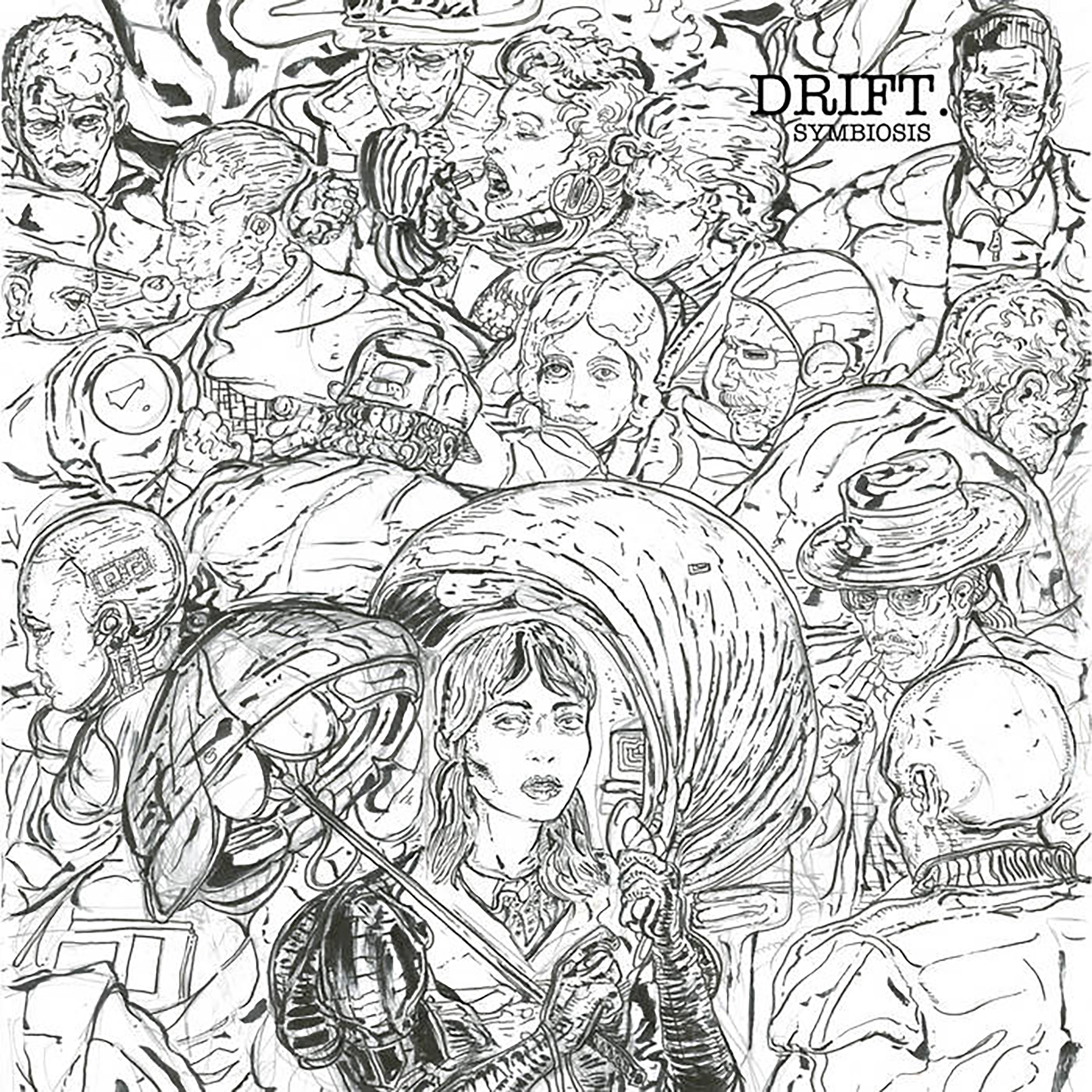 This is the debut full-length for Nathalie Bruno’s electronic pop project and it is quite a bombshell, unveiling a far more avant-garde and experimental approach than was evidenced on her previous EPs. That reinvention was triggered by a fateful thrift store find (Klaus Schwab’s The Fourth Industrial Revolution) that inspired a deep fascination with both '70s NYC and German experimentalists and bands like Broadcast. Historically, I have found that a lot of kosmische-inspired contemporary music is wince-inducingly bad, cloyingly beatific, or both, yet Bruno proves to be the rare exception who is able to channel that influence into a fresh and inspired vision all her own. The secret, of course, is avoiding the "revivalist" trap and merely filtering all the good bits into your own distinctive aesthetic, but that is far easier said than done. While Bruno's vision admittedly errs a bit towards homage on some of Symbiosis's instrumental interludes, the more fully formed songs like "Atomic Soldier" strike an absolutely sublime balance between expert pop craftsmanship, ragged edges, and spacey, futuristic gravitas.  This is a truly exceptional album, as I can think of very few artists are able to blend great hooks and smoldering, understated psychedelia together as seamlessly as Bruno.
This is the debut full-length for Nathalie Bruno’s electronic pop project and it is quite a bombshell, unveiling a far more avant-garde and experimental approach than was evidenced on her previous EPs. That reinvention was triggered by a fateful thrift store find (Klaus Schwab’s The Fourth Industrial Revolution) that inspired a deep fascination with both '70s NYC and German experimentalists and bands like Broadcast. Historically, I have found that a lot of kosmische-inspired contemporary music is wince-inducingly bad, cloyingly beatific, or both, yet Bruno proves to be the rare exception who is able to channel that influence into a fresh and inspired vision all her own. The secret, of course, is avoiding the "revivalist" trap and merely filtering all the good bits into your own distinctive aesthetic, but that is far easier said than done. While Bruno's vision admittedly errs a bit towards homage on some of Symbiosis's instrumental interludes, the more fully formed songs like "Atomic Soldier" strike an absolutely sublime balance between expert pop craftsmanship, ragged edges, and spacey, futuristic gravitas.  This is a truly exceptional album, as I can think of very few artists are able to blend great hooks and smoldering, understated psychedelia together as seamlessly as Bruno.
The word "symbiosis" is not a particularly obscure one, yet it resonated quite deeply with Bruno when she stumbled upon it in a William Burroughs book (a revelatory trigger not unlike her chance meeting with The Fourth Industrial Revolution).While everyone knows that encountering the right idea or influence at the right time can lead to a significant creative breakthrough, it is equally true that many, many artistic epiphanies are quickly forgotten about or abandoned before yielding any fruit (or else wind up producing something that falls far short of its initial promise).Consequently, I am extremely impressed with both how fully Bruno managed to internalize her new ideas and how persistent she was in finding ways to seamlessly incorporate them into her vision.From the sounds of it, the evolution was not a quick one nor was Symbiosis an album that came easily.To her credit, however, Bruno patiently allowed these songs to take shape naturally, albeit guided somewhat by her desire to craft a thoughtful and complete album-length statement (rather than just a batch of new singles).To my ears, she succeeded admirably, yet Symbiosis is a wonderful album precisely because Bruno is so adept at crafting strong singles.At first, however, Bruno devoted her energies mostly to devouring and assimilating a host of intriguing new influences, both musical and otherwise.And then, once that phase had run its course, she set about revisiting many of her older recordings with fresh ears and a far more experimental bent, carving them up them, recontextualizing previous motifs, and incorporating cell phone field recordings until all the pieces fit together into something fresh, varied, and adventurous, yet still recognizably Drift.
In keeping with Bruno's vision of Symbiosis as an complete, album-length experience, these ten songs unfold with a coherent and intriguing arc that winds up in a very different place than it begin.Following a twinkling and somewhat whimsical instrumental opening ("Masquerade I"), Bruno dives right into a three-song hot streak of the album's most compelling threads.It is fair to say that the first part of that three-part salvo ("Human") owes some significant stylistic debt to Chris & Cosey, as it is built from a minimal, yet driving synthpop groove and breathy, sensuous vocals.That is merely the foundation though, as Bruno quickly makes that aesthetic her own by transforming that straightforward and hooky structure into something more hallucinatory and disorienting with dissonant synth smears, clanging metallic tones, weirdly detached-sounding cowbell flourishes, and retro-industrial voice samples.The following title piece then spends its first third wallowing in blearily warped synth mindfuckery before unexpectedly giving way to a half-beautiful/half-broken final act of tender vocal melodies adrift in a skittering, disjointed swirl of mangled synths and misused guitars.Bruno's early album highlight reel then culminates with Symbiosis's lead single "Atomic Soldier," which casts most of the previous dissonance aside for a gorgeous bit of shoegaze-y pop built from little more than a steadily thumping kick drum and a lysergically swooping synth chord (though she eventually augments that foundation with some jagged guitar chords, stammering vocal loops, and corroded synth tones).Then, after a brief run of more varied fare in the middle of the album, Bruno rallies for yet another run of fine would-be singles.Both "Function" and "Raytheons Radar" return to the early '80s synthpop territory of "Human," with the former resembling a darkly intense minimal wave classic and the latter taking a more playfully burbling and propulsive approach that would make it an ideal second single.
While I would not necessarily say Symbiosis has any significant weaknesses, it is worth noting that none of its ten songs cut very deeply.That is my sole caveat.While it is not exactly a "light" album, Bruno's greatest strengths lie in her craftsmanship, her attention to detail, and her talent for subverting the usual synthpop formula with a host of playful, gnarled, and experimental flourishes.That said, Symbiosis still has way more good songs than most albums in this vein, as almost everything other than the instrumentals boasts a strong enough hook to be a solid single.Moreover, both the character of those hooks and the mood of the pieces varies quite a bit from song to song.In fact, Bruno proves herself to be a multi-instrumentalist with remarkably unerring instincts and unwavering good taste, as some songs are driven by her vocal melodies, some have a great synth hook, some have a cool guitar part, and some are propelled by a strong groove (like the disco-inspired bass line in "Raytheons Radar").She also manages to avoid diluting all of those cool motifs with unnecessary clutter, paring every song down to just its essence."Atomic Soldier" is probably the best example of that, as the essence of that piece is primarily just the swooping synth tone and the vocals and Bruno wisely ensures that both remain the focus (and even goes one step further in crafting transitions that effectively reemphasize those themes).Similarly, her experimentation always feels natural and unselfconscious, enhancing rather than derailing her more pop-minded themes.As far as I am concerned, Bruno does damn near everything right on this album, assembling an impressive streak of fun, sensuous, and catchy songs that feels intimate, homespun, and endearingly idiosyncratic.
Samples can be found here.
Read More
- Administrator
- Albums and Singles
 This latest volume of Carsten Nicolai's planned five-part series devoted to degraded samples is a bit different from previous installments, as the Xerrox vision has become a more focused and cinematic one. In Nicolai's own words, this series has increasingly been devoted to exploring more "intimate gestures and emotional sensibilities" than the meticulous sound design perfectionism and concept-driven art that he is best known for. In practical terms, that means that Xerrox, Vol. 4 mostly captures Alva Noto in comparatively abstract and almost "ambient" territory, as these fourteen songs are uncharacteristically built from slow-moving drones and sleepy, soft-focus melodies. For the most part, such an approach is appealing primarily because it reveals a more organic and harmony-focused side to Nicolai's long-running and oft-excellent project (as opposed to an evolution or improvement upon his usual fare). As such, Xerrox, Vol. 4 is a definite outlier in the Alva Noto discography. In the case of few pieces, however, a more gnarled and dissonant character unexpectedly emerges that feels like a tantalizing glimpse of a significant creative breakthrough.
This latest volume of Carsten Nicolai's planned five-part series devoted to degraded samples is a bit different from previous installments, as the Xerrox vision has become a more focused and cinematic one. In Nicolai's own words, this series has increasingly been devoted to exploring more "intimate gestures and emotional sensibilities" than the meticulous sound design perfectionism and concept-driven art that he is best known for. In practical terms, that means that Xerrox, Vol. 4 mostly captures Alva Noto in comparatively abstract and almost "ambient" territory, as these fourteen songs are uncharacteristically built from slow-moving drones and sleepy, soft-focus melodies. For the most part, such an approach is appealing primarily because it reveals a more organic and harmony-focused side to Nicolai's long-running and oft-excellent project (as opposed to an evolution or improvement upon his usual fare). As such, Xerrox, Vol. 4 is a definite outlier in the Alva Noto discography. In the case of few pieces, however, a more gnarled and dissonant character unexpectedly emerges that feels like a tantalizing glimpse of a significant creative breakthrough.
The album opens with one of Nicolai's strongest and most evocative feats of sample-layering alchemy, as "Xerrox Kirlian" combines somber synth chords, twinkling chimes, strings, ghostly voices, and a rumbling undercurrent of noise into a tender and bittersweetly melancholy dreamscape.To some degree, that piece sets the tone for the entire album and it is generally an appealing one, but the album tends to reach its greatest heights when Nicolai heads in a more sci-fi-influenced direction.His occasional forays into harsher textures are quite welcome as well, as they inject some very effective bite and dynamic intensity into the album's understated, grayscale aesthetic.For the most part, however, Xerrox, Vol. 4 makes me feel like I am walking slowly through the ruins of an abandoned city in a daze.In fact, the album almost feels like a futuristic field recording of empty, windswept streets and blowing trash, but one that is haunted by an omnipresent, machinelike-hum and drifting, curdled strains of orchestral music.While that certainly makes for a brooding and sustained atmosphere of ominousness, Nicolai is generally quite content to simply let that air of mystery and emptiness linger, only rarely parting the veil to reveal something more substantial and structured.The most vividly realized and memorable of those moments falls near the end of the album, as "Xerrox Sans Retour" builds up from a ghostly chord progression into an eerie crescendo of bleary strings, scrapes, and crackles.There are several other pieces in which form breaks through the fog, however, and they all seem to reveal a different shade of the same desolate reverie (sometimes even letting in an unexpected bit of light).  
Most of the lighter pieces appear on the first half of the album, such as "Xerrox Neige" and "Xerrox Île."The former is essentially a drone piece, but the lazily undulating tones feel considerably warmer and more organic than those that fill the rest of the album (even the rhythmic washes of crackling static feel non-threatening)."Xerrox Île," on the other hand, is one of the album's more melodic pieces, as a lovely, Celer-style string loop lazily floats across a stark landscape of distant rumble and hiss.Elsewhere, "Xerrox Voyage" takes a sleepily wistful tone, as an understated and gently twinkling melody unfolds over a corroded-sounding backdrop of deep-bass drones and spacey textures that resemble interstellar radio signals.Later, the album's longest piece ("Xerrox Calypsoid 2") explores similar territory, but heads in a more ambiguous and queasily hallucinatory direction, as Nicolai's slow-motion string samples descend in a disorienting and vaguely dissonant chord progression.I prefer the shorter "Xerrox Calypsoid 1" though, as it is enlivened with a host of buzzing, whooshing, and sputtering textures that give it a bit more textural heft.That said, the album's highlights are not all that different from the rest of the songs, as Nicolai remains unwaveringly devoted to an elusive aesthetic of hazy, slow-motion melodies over shifting sands of bleakly eviscerated-sounding drones.The overall effect feels akin to being submerged existentially, like there is some kind of barrier dampening and blurring every stimuli.      
It feels somewhat wrong to describe Xerrox, Vol. 4 as a challenging or difficult album, as I usually reserve those terms for harsh or radically structured work.This album, on the other hand, is consistently tranquil in tone and relatively conventional melodically, yet it feels fundamentally alienating and unsatisfying by design.That admittedly seems like a perplexing choice, but given how exacting Nicolai's work has been in the past, it can only have been a very deliberate decision.While that approach is not necessarily ideal from an entertainment perspective, Nicolai has always been a very cerebral and art-driven fellow and Xerrox, Vol. 4 is nevertheless an intriguing and ambitiously unusual statement that may very well be ahead of its time.In fact, it could be argued that he has birthed a new type of science fiction dystopia with this album, as it feels like the soundtrack for a future that is washed-out, crumbling, and numb rather than one populated with flying cars and glittering skylines of shiny metal edifices in unusual shapes.Actually, in keeping with Nicolai's compositional approach, it might be more apt to say it feels like a grainy, tenth generation photocopy of a futuristic city that has rendered everything a lifeless, murky gray.It is also enigmatically more than that, however, as it feels like there are small tears and ragged edges in that photocopy which reveal fleeting glimpses of something more vibrant and glimmering beneath.It is definitely a strange and complex listening experience and a very hard album to wrap my mind around.While I think I can say with some certainly that it will never be among my favorite Alva Noto releases, I certainly admire Nicolai's willingness to attempt something so complexly ambiguous and alien.No artist stays vital by repeating themselves and Nicolai deserves a lot of credit for pushing the envelope in a direction that had presumably never even crossed anyone else's mind.
Samples:
Read More
- Administrator
- Albums and Singles
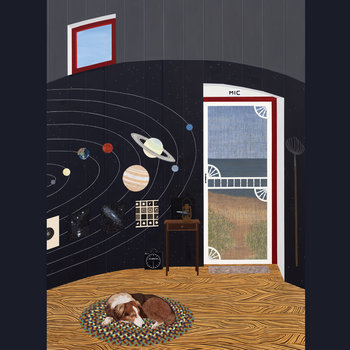
Los Angeles-based harpist Mary Lattimore returns with Silver Ladders, the full-length follow-up to acclaimed album Hundreds of Days. Since 2018, Lattimore has toured internationally, released collaborative albums with artists such as Meg Baird and Mac McCaughan, and shared a friends-based remix album featuring artists such as Jónsi and Julianna Barwick. At one of her festival appearances, Lattimore met Slowdive's Neil Halstead: "A friend introduced us because she knew how big of a fan I was and Neil and I had a little chat... The next day, I just thought maybe he'd be into producing my next record.” He was. Lattimore traditionally records her albums holed up by herself, so the addition of Halstead's touches as a producer and collaborator leaves a profound trace. "I flew on a little plane to Newquay in Cornwall where he lives with his lovely partner Ingrid and their baby. I didn't know what his studio was like, he'd never recorded a harp, but somehow it really worked."
Recorded over nine days at Halstead's studio stationed on an old airfield, Silver Ladders finds Lattimore exercising command and restraint. Her signature style is refined, the sprawling layers of harp reigned in and accented by flourishes of low-end synth and Halstead's guitar. The music can feel ominous but not by compromising vivid wonder, like oceanic overtones that shift with the tides. This material is colored by specific memories for Lattimore; "Neil has this poster of a surfer in his studio and I'd look at it each day, looking at the sunlight glinting on the dark wave. In these songs I like the contrast between the dark lows and the glittering highs. The gloom and the glimmer, the opposites, a lively surfing town in the winter turned kinda rainy and empty and quiet."
Lattimore and Halstead reformed three existing demos and improvised the remaining four songs. Among the batch she brought with her, the title track recalls a trip she took to Stari Grad, Croatia on the island of Hvar. "I spent some days there just swimming in the bay, silver ladders right into the sea." The image stuck with her when she found herself performing at a cliffside wedding overlooking the Pacific. "Before anyone showed up, I had time to set up and play and this song came to me, "Silver Ladders (to the sea)," so I made a little recording on my phone to remember it." This sketch expanded; a delicately glittering harp melody comes over the horizon, swelling and rolling towards the shore on ebbs of synth and refractory delay.
Inspired by a story that Halstead shared with Lattimore, "Don't Look" is the score to a beach-side tragedy. "It was a stunning beach with big waves," Lattimore says, “and (Neil) told me that recently, some teenagers had been out there with these surfboards that were way too light and had found themselves in trouble. The four adults that went in to save them died but the teenagers survived." The power of undertow pulls the melody, which begins in a minimalist and elegiac mode, deeper and deeper. Heavy strikes on low harp strings summon up Neptune's wrath, dashing heroism against the roar of the sea, permitting those naive enough to enter that dangerous water to exit, now less naive.
Lattimore's song titles often evoke fragments of things heard or misheard. In an anecdote from Lattimore, "I chose "Chop on the Climbout" as a title because a pilot once said, 'Folks, there's going to be some light chop on the climb out’ and I thought the language had an insider mystery that was compelling. The song reminds me of plane traveling." Listeners can feel the drama of aeronautics; the thrust of liftoff, the rumble of overhead luggage as the craft ascends into the belly of cloud cover. Passengers yearning to traverse wide distances in brief moments. The hum steadies into a mesmerizing drone, a synth on top of which Lattimore and Halstead take turns exchanging chiming leads smeared with static-laden air pressure.
These songs are clearly tales, and yet Silver Ladders is open to interpretation. Her memories — "the Cornish landscape, the hotel from the movie The Witches, the cream tea, winning the pub quiz, the Sunday Roast, the ghosts of all of the surfers who had died in the wild waves, the night walks to the top of the hill to see the moon shining on the water…" — shine through these works without defining them. In a way, much like the sea, or the sky, they belong to everyone. Such is the beauty of her craft, which stands here in unprecedented company and clarity, the confidence of an artist in full.
Out October 9th on Ghostly International.
Read More
- Administrator
- Albums and Singles

Over the space of this album, a slow and patient unfolding occurs. Strings are able to breathe, finding the space they need to move, although their movements are lurching, clunky, and convulsive. Seabuckthorn illuminates the distance – a family, a time spent together, and a beautiful summer. It has the feel of old European adventures and trips to glorious cities, markets, churchyards, and yawning fields, with a population yet to face the music of climate change or even a World War.
Years erode the features, and a scattering of distortion eats away at the music. The year in question has faded away, and time has gone way beyond evening or dusk, but Seabuckthorn brings it back and makes it relevant once again. The music is late and so is the hour, but even as the light dims, a beautiful, rusty afterglow is left behind, a dull gleam coming from a King's crown.
More information can be found here.
Read More

